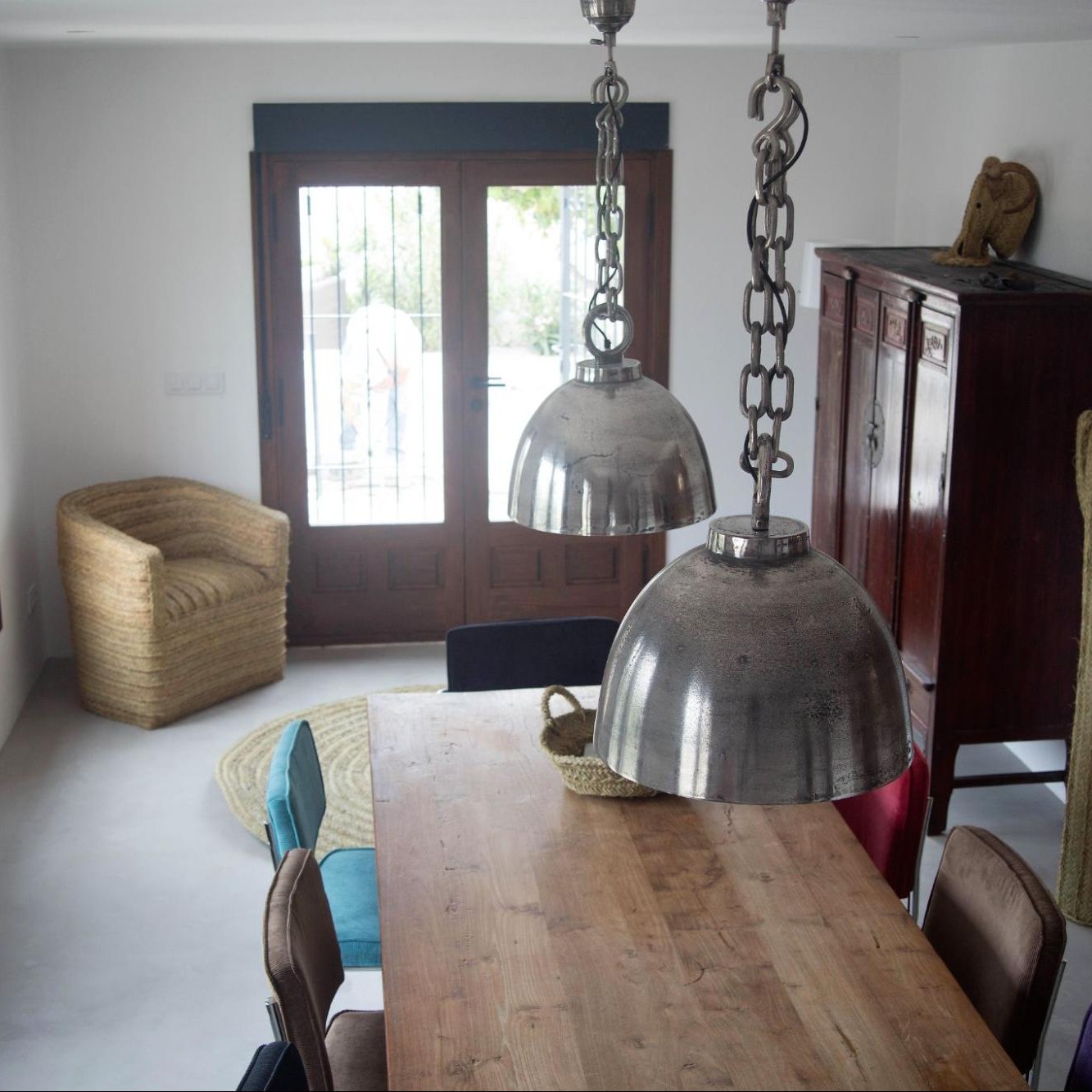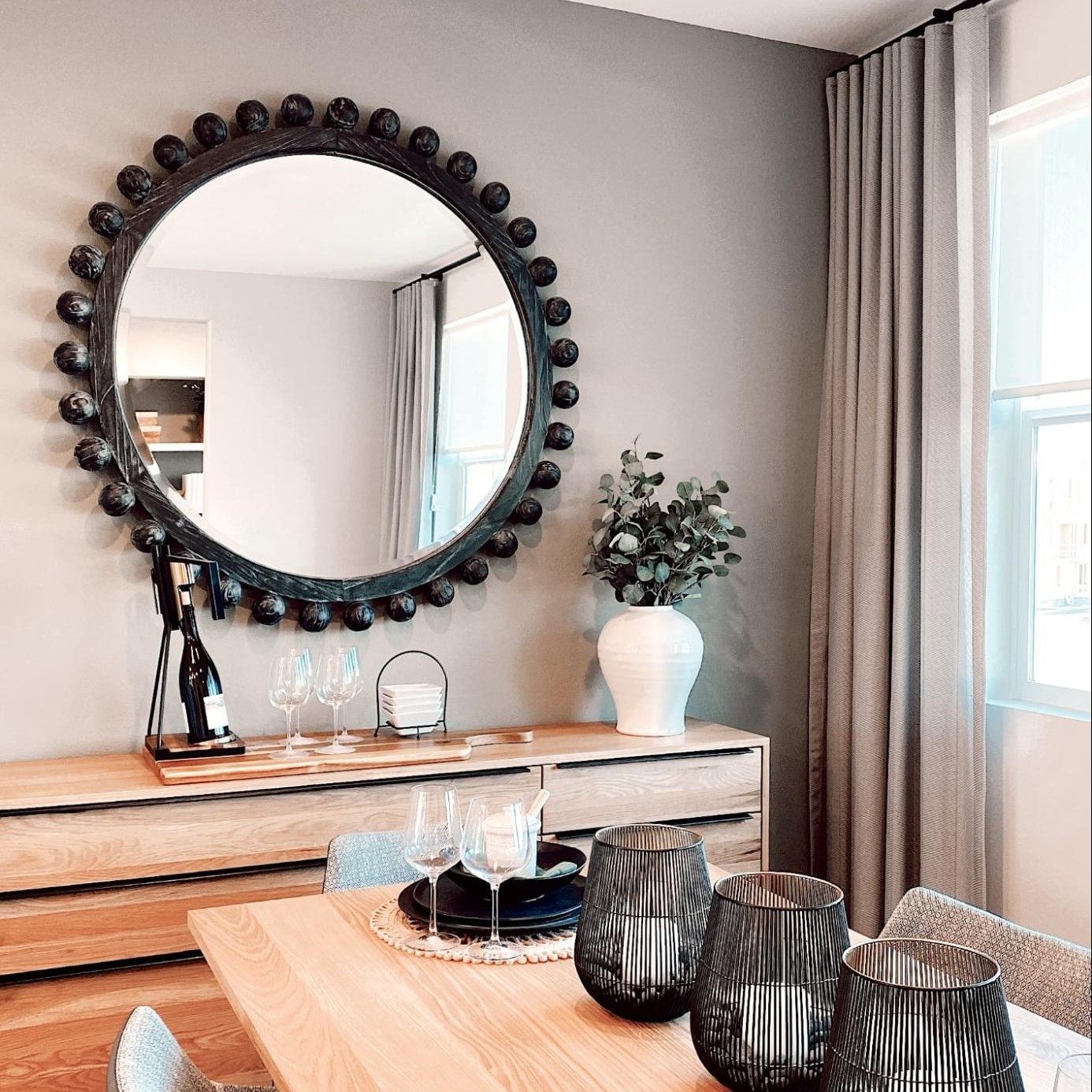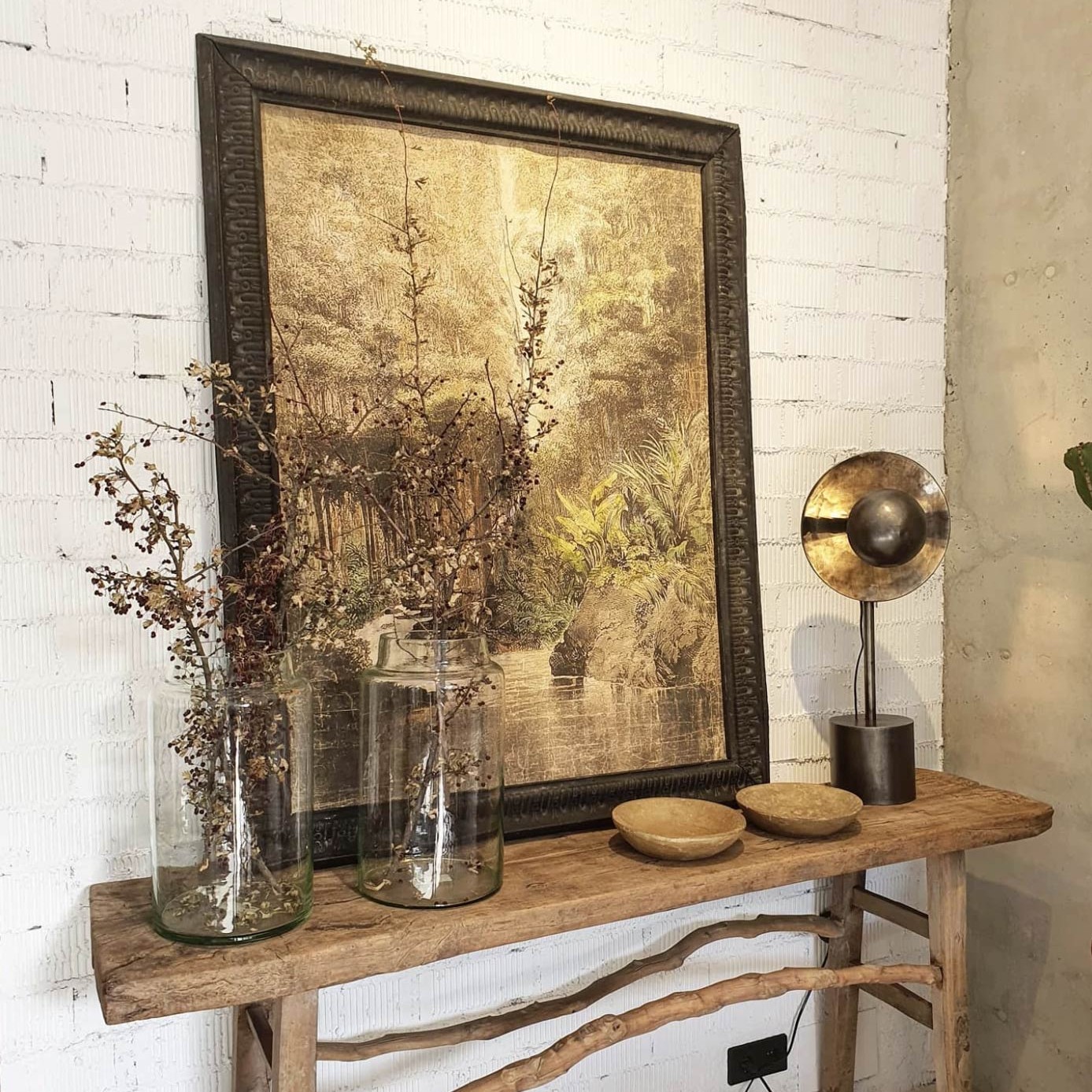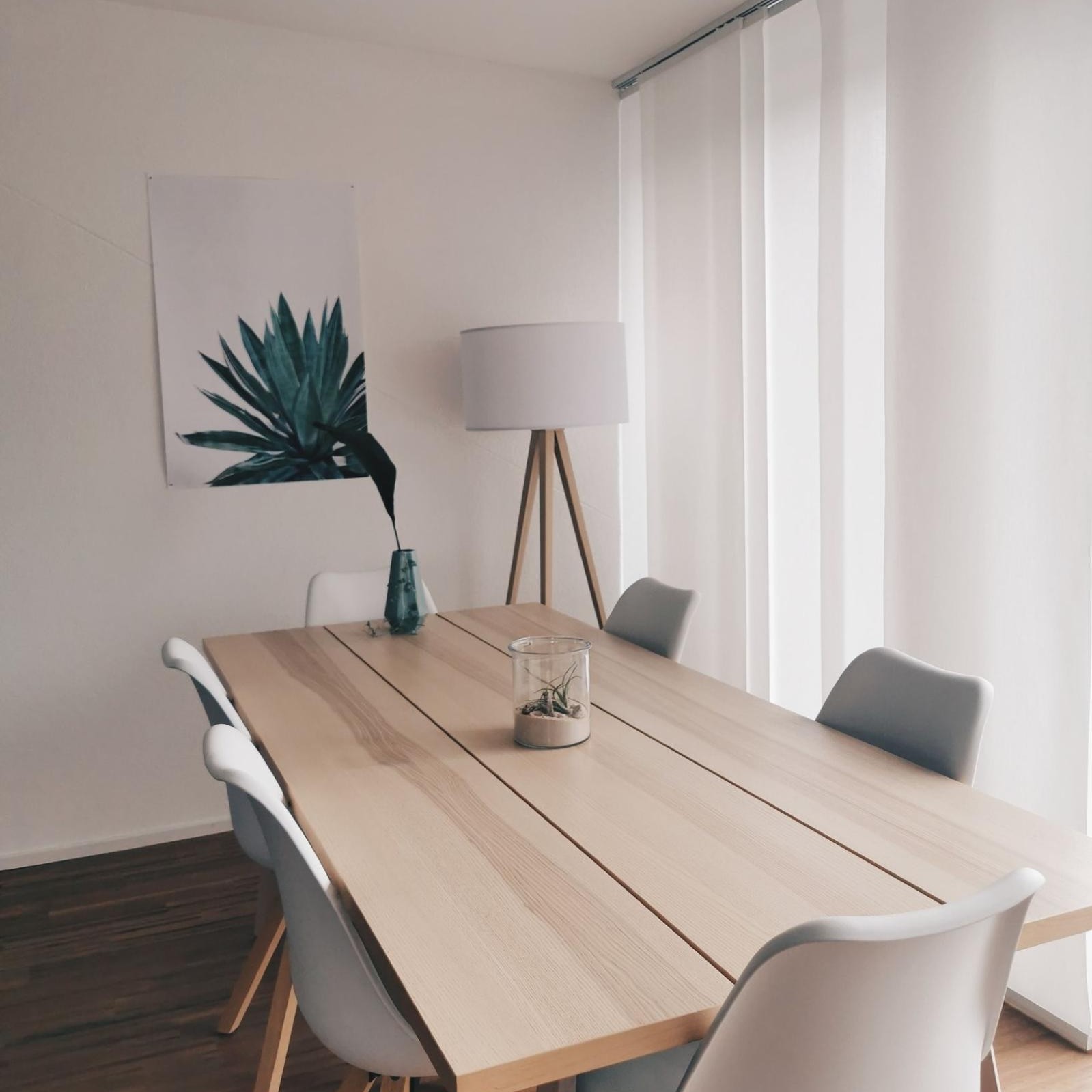We’ve decided to break down some of the dining room rules you should follow in your own home. The purpose of these tips is not to give hard rules to follow (or reprimand you if you don’t follow them) but rather to give you guidelines that can help you make the room feel as cohesive and harmonious as possible. Think of it as the cheat sheet of what your dining room should do. There are always exceptions to the rules, but to break them… you first have to know them. So let’s get down to business.
Furniture Placement

RULE: Give 75cm to 100cm of space between large pieces of furniture (if your dining room allows it) if not, then at least 45cm – 60cm.
You know how when you’re sitting on a flight and the flight attendant pushes that little cart down the aisle hitting every sleeping shoulder on the way? Well, it’s not the flight attendant’s fault, it’s the space they have to move. Don’t let your dining room be that airplane aisle. Make sure you have at least 60cm of space around your dining table so that people can move freely around it without having to bump into all the diners on their way to use the vanity.
RULE: Leave about 60cm of space per person for maximum comfort and enjoyment of the meal.
Here is a guideline for seating for rectangular tables based on size:
- 120cm long table: seats 4
- 150cm – 180cm table: seats 6
- 200cm – 220cm table: seats 8
- 230cm – 275cm table: seats 10
- 300cm table: seats 12
And for round tables according to size:
- 100cm – 120cm diameter table seats 4
- 150cm diameter table seats 6-8
Similar to the previous one. Instead of for the space around your table, this is for the space on your table. This is not an elementary school cafeteria where everyone is shoved across a table trying to gobble down their food. Therefore, give your family and your guests enough space to sit comfortably in their place and not be curious about which water is theirs because they are all very close together.
RULE: Chairs must be able to slide easily under the table, with or without arms. Ideally, there should be 20cm between the arm of the chair and the apron of the table, but it is not a rigid rule. For reference, dining chair seats are usually 45cm – 50cm high and dining tables are usually 75cm – 80cm high.
Not only will this help with the flow when the chairs are empty and you need to move around the table, but it also helps people who need to pull their chair in (small children) easier accessibility to the table when they are eating.
RULE: This is more of a guideline than a strict rule. The height of the back of the chair should be similar to that of the table. For example, if you have a small 90cm round table you should not use a chair with a super-large height scale, as it will appear out of place.
This rule can be broken and technically, but use your best judgment when it comes to the proportions between the chair and the dining table and don’t make the chairs too tall for the size of the table.
Lighting

RULE: Choose a ceiling light half the width of your dining table. A 120cm wide (or diameter) dining table means a 60cm lamp.
The other way is based on the size of the dining room. You have to measure the length and width of the room in which you want to place your lamp, then add the two figures and multiply it by 3, multiply the result by 2.5 and you will obtain the appropriate diameter for your room.
An example:
We have a room that is 5 meters long by 3 meters wide. This is the operation we should do:
5 + 3 = 8
8 × 3 = 24
24 x 2.5=60cm
Having the correct scale light above your table will help the whole space feel more cohesive. Unless your lamp is a more abstract or sculptural piece, choose something that is on par with the size of the table; otherwise your room might feel overwhelmed by the lamp.
RULE: Center the pendant light on the table, not in the room.
You might think this is pretty obvious, but we’re including it just to be clear. If you have a junction box that is off-center from the dining room table, then move the chandelier or have the junction box moved so the light is directly on the table.
RULE: Hang your lamp so that the bottom is 70 – 90cm above the table. This way no one’s vision is blocked and everyone can see each other 🙂
You don’t want to feel like you’re in an interrogation room with the light directly overhead, and you also don’t want to lose all sense of atmosphere. So keeping the light at the right distance from the table will help both worlds work well together.
RULE: For rectangular chandeliers, leave at least 15cm from the edge of the table to the lamp on both sides.

The lamp should not extend beyond the edge of the table in any direction. If it’s bigger than the table, the room might feel heavier.
RULE: For several pendants above a dining table, we recommend hanging them at a distance of 65cm – 70cm.
If you decide to place multiple pendants or a row of pendants on top of the table, this rule will help you space them out so they don’t sit too close and claustrophobic next to each other. It will also help the light spread evenly across the room rather than in one spot.
RULE: Place the wall sconces between 150cm and 180cm high from the ground. If multiple sconces are used in the dining room (or any room), ideally they should be 120cm apart, but at least 60cm – 90cm apart.
This rule isn’t just for aesthetics, it also helps keep the light bouncing around the room even so you don’t end up with any dark corners.
Sideboard

RULE: The sideboard should be at least as high as the dining table, but ideally higher.
When you walk into a room, your eye wants to see the surfaces that objects are displayed on, so having your sideboard slightly higher than the height of your table will help things feel proportionate and well placed.
Art

RULE: Art, whether a piece or gallery wall, must be at least 2/3 the size of the side of the table it is on, but typically no larger than the table.
This rule can be broken, but usually any type of wall art will look better if it is slightly narrower than the length of your table. If your collection extends beyond this, the proportions of the room can start to be thrown off.
On top of the Table

RULE: Keep centrepieces 12 inches or less so everyone can see each other across the table.
This is not a gala, save the wild centrepieces or flower arrangements for a party. When you’re sitting at the table, you don’t want to have to try to look around a centrepiece to see who’s in front of you. And last but not least, a design tip from Mike…
TIP: A personal rule of Mike’s is to never put a tablecloth on the table unless it’s on a more formal or party dinner. Instead, he uses a table mat for casual, everyday use if you need something on your table.
